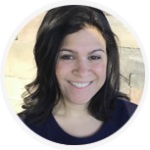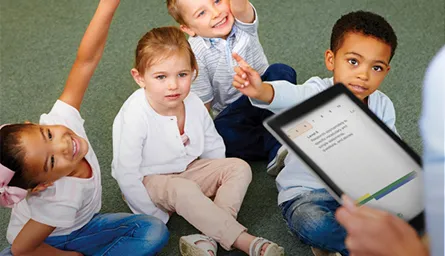Using Assessment Data: Reflecting on the Past and Planning for the Future


I remember returning from the winter break with renewed energy for my children as well as my teaching. I’d start the new calendar year by pouring over all of the notes I’d written, the photos I’d snapped, and numerous other pieces of documentation I’d collected in the fall – to help me think about how to plan for the winter and spring. Now, as a researcher, I often think back to how I used data as a teacher and what, perhaps, I would do differently now.
Use data to tell BIGGER stories
Back then, I frequently used data as a tool to guide my instruction for individual children. In recent years, my reflection on data collection and its use has underscored the idea that data in aggregate can tell bigger stories that also matter, such as:
- What does the data say about the whole class?
- How does this year’s data compare to my classroom from last year at this same time?
For example, looking at the way the whole class is performing in particular content areas is important, but perhaps through this lens, it is also possible to identify places where we can do a better job of constructing activities and lessons that foster particular kinds of skills and development. Also, looking at trends in this way can help to reflect on professional development needs and areas where we might need additional support to bolster our own practices.
Data-Driven Instruction
I’ve also found myself reflecting on the ways we use the term “data-driven instruction” in education, what it means and how this approach is implemented into practice.
Generally, I feel we often emphasize outputs as the main focus. These outputs include:
- how children are doing at the end of the school year compared to where they started;
- which children showed growth;
- how much growth was shown; and
- in what areas children displayed growth.
I think we often fall into a trap where we begin to focus only on child outcomes as a way of measuring how good we are at what we are doing. However, we also understand that many variables factor into child outcome data. For example, the quality of the data collected and reflection on whether anecdotal evidence that we collect as teachers capture the highest level of what children can do.
Once data is collected, it is critical to look at what the implications are for us as teachers to move them to the next rung on the ladder. As such, the inputs matter too. How we are collecting data including what we, as teachers, consider evidence for individual skills in addition to how we are rating children on measures of proficiency must also be considered. While it is important to individually monitor data for children on a personal level, it is also important to look at classroom-level patterns to examine trends that may be the result of broader lessons or activities that we plan as teachers. Looking at data in this way can inform the way that we tweak things for subsequent plans.
Questions to Guide Your Reflection
Questions to Consider when Reflecting on Data Collection and Child Outcomes:
- How often am I collecting data as I observe individual children?
- How often am I collecting data as I observe groups of children?
- What does my data collection reflect about my teaching practices?
- Am I collecting data on individual children as often as possible or am I focusing on children in groups instead?
- Am I paying attention to trends over time during data collection periods?
- How am I using the data I collect to inform lesson/activity planning for individual children?
- How am I using the data I collect to inform plans for my own professional growth?
- How am I comparing data points to ensure that the story I’m telling about children broadly makes sense?
- How am I addressing gaps in my data?
- Are there trends in my data collection (e.g. more evidence of certain objectives than of others at particular points in the data collection period)?
- Am I privileging specific content areas while finding it harder to document others?
Questions to Consider when Reflecting on Data Collection and Your Practice:
- Does my data reflect that children have ample opportunities to develop skills across all domains of the curriculum?
- Are there areas that show gaps where perhaps I need to provide more opportunities for engagement?
- Am I giving myself enough opportunities to capture what children can do individually?
- How often am I observing what children can do collectively vs. individually?
- Am I looking at patterns in my data before final checks are due to inform and adjust my instruction?
- Are there areas where I feel I could benefit from coaching or Professional Development to support children or learn how to better provide lessons or activities that can help?
- How is my data collection helping (or not helping) me work with families to support growth in my students?
